By Sanjay Joshi
Last year turned out to be a very trying time for my 500G Reef. The tank has been setup and running since late 2006, and over the years has run trouble free for the most part other than a few minor glitches here and there, mostly related to travel and reef gremlins partying while I was away. The tank has been set up utilizing sound design principles to thwart Murphy and withstand hands off operation over extended periods of time to comply with my busy travel schedule. A picture of the in early March 2013, is shown below.
Starting last April, a series of successive problems led to the complete decimation of the extensive Acropora population in my tank. It has been heart breaking to watch the loss of corals that had grown into 16-20” diameter colonies. It would have been easy to hide the problems and protect my reputation as a reputable and accomplished reefkeeper, however I feel that more can be learned by sharing bad experiences and lessons learned than by just speaking of success stories. In keeping with this philosophy, this article details the series of events that struck my tank, the actions taken, and lessons learned.
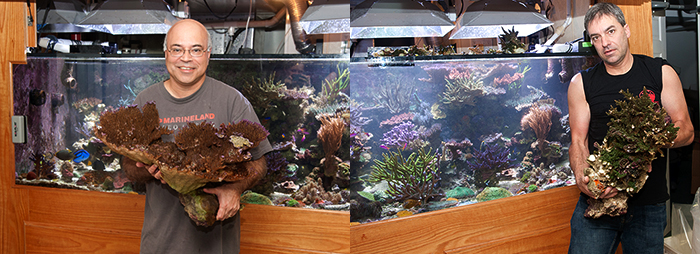 In late March, I started a reef renovation project to remove some of the large colonies in my tank. I usually renovate 1/3 sections of my reef on a yearly basis. Several large colonies of corals were removed and replaced by new corals. A lot of new nice Aussie corals had been coming in and I needed to make some room in the tank for them.
In late March, I started a reef renovation project to remove some of the large colonies in my tank. I usually renovate 1/3 sections of my reef on a yearly basis. Several large colonies of corals were removed and replaced by new corals. A lot of new nice Aussie corals had been coming in and I needed to make some room in the tank for them.
Soon after, I noticed that a couple of my corals were showing signs of RTN (Rapid Tissue Necrosis).
RTN or Rapid Tissue Necrosis is loosely defined as a rapid degradation of coral tissue that leads to death of large portions of the colony, and in most cases, the complete coral in less than a day or in some cases even a few hours. The symptoms generally involve sloughing off of large chunks of the coral tissue while the coral still shows healthy polyp extension in other areas of the colony as can be seen in the many of the following pictures.
It is absolutely heartbreaking to see large colonies that have been raised for years from small frags 1-2” in size die over night or have large patches of death develop where none existed a few hours before. As is human nature, the first reaction is to start looking for potential causes. A short post on social media describing the situation resulted in a wide range of potential casual factors that were being attributed to causing the RTN, along with a wide range of advice on actions to be taken. The range of advice varied from simple to some obscure off the wall suggestions, often contradictory, and largely anecdotal. It was clear that the reefing community was very sympathetic to my situation. My extended aquatic support system desperately wanted to help and people were freely giving suggestions and action items. As I pondered the myriad and overwhelming nature of suggested advice, I wondered how anyone would sort through this and come up with a plan of action that was not a haphazard random approach of “ do this” “do that”, “I did this and it worked”, “I did that and it worked”. Unfortunately RTN has not been studied scientifically and anecdotal evidence of the results of action is all that we have to go by. We also know from past history of advice in the reef hobby that it is often based on the last thing that was done before the problem went way, while ignoring the whole bunch of “corrective” actions that were taken before the last action that “worked”. There is very little, if any, scientific or even pseudo scientific experimentation undertaken by the reef hobby. This makes it very difficult for someone (especially with a background in scientific experimentation) to try to come up with a rational method to approach the problem. Running full experimentation on all the various pieces of advice and suggested actions and their effectiveness in combating the RTN problem is a non- trivial problem best left to those that have an intimate knowledge of biology. Still, one has to sort through and decide on what is reasonable and viable and presents the likeliest potential to address the issue. I am just going to walk through my thought processes and analysis, in the hope that it helps others in sorting through the vast array of confusing, conflicting and muddled advice.
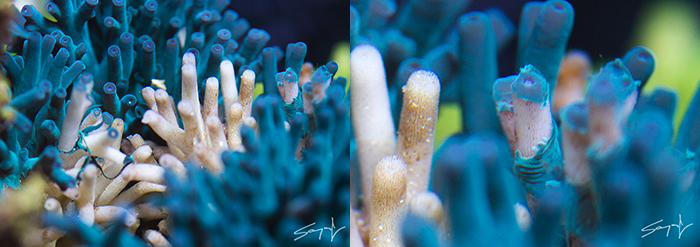 The first step was to identify the most obvious potential causes and ensure that the current values were within acceptable range:
The first step was to identify the most obvious potential causes and ensure that the current values were within acceptable range:
– Water Quality and Water Parameters (salinity, Alkalinity, Ca, Mg, Nitrates, Phosphates – ones that we typically measure and monitor)
– Water Temperature
– RO/DI unit
– Salt quality
The next step was to review if there were any major changes in the past in these parameters that could potentially be a contributing factor. A quick check of past data and records showed that there were no significant changes or spikes in the values. The same salt batch had been used for water changes and was also used in other tanks without any problem. The water temperature had been slowly rising–this is typical of my tank as it is making the transition from winter to spring. My tank usually runs at 75F in winter and around 80F in the warmer months. Past incidences of cyanobacterial bloom, and past RTN events had always occurred during spring. Could the change in seasons be a sign for things to bloom in the tank? Is it “Spring Fever”? If RTN is bacterial/viral then changes in temperature could influence their growth and shift the balance within the coral holobiont. I chalked this one up as a potential factor.
Once the most obvious parameters were addressed, it was time to run through the secondary list and look at other potential causal agents:
– Changes in light intensity
– Changes in brand of salt
– Bad test kits giving faulty results
– Levels of minor elements such as Iodine, Potassium, Strontium
– Carbon, GFO
– Potentially poor quality of foods being used
– Heavy Metals
– Metals in contact with water – such as copper wires from pump windings, decaying magnets
– Changes in water flow
– Addition of new corals
– Stress caused by heavy fragging
In my case, several of these were also eliminated after careful checking. A 2nd independent set of test kits was used to eliminate the possibility of faulty test readings. All pumps were examined for potential contact with metal. All magnets were checked. Nothing seemed out of the norm. Poly filter pads were used to check for the presence of any heavy metals, none were detected. It is possible that the heavy fragging and the associated stress could be a contributing factor making the fragged corals susceptible to attack by pathogens. Compound this with the addition of some new wild colonies and the scenario where the newly added corals could have brought in bacteria/virus that was able to infect the corals stressed due to heavy fragging became a very viable possibility.
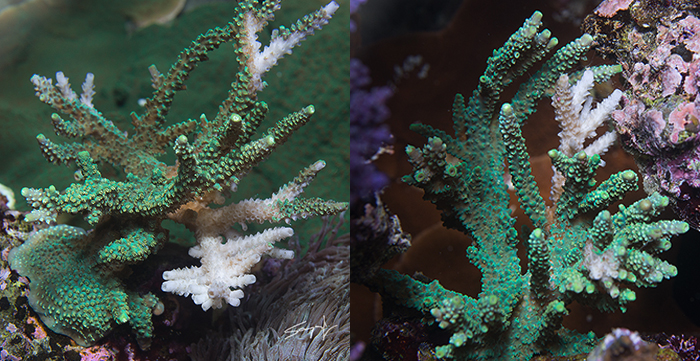 It was then time to explore the long shots. Several were identified and evaluated:
It was then time to explore the long shots. Several were identified and evaluated:
– Pesticides
It was spring, and I did have lawn service come and spray for weeds and fertilize. Could some of that have potentially gotten into the house and contaminated the tank?
– Airborne Contaminants
Were any household sprays and air fresheners used near the tank?
– Beef heart as food
I had started keeping Discus and was feeding them a beef heart based food mix. I was also occasionally using that food in the reef. Could the beef heart have fueled bacterial growth in the tank?
Pesticides and airborne contaminates can be removed from the water though the use of carbon filtration. Both GAC and the GFO were changed and replaced, along with the addition of Polyfilters. RO filters and components were replaced. Corrective action directly related to these lists that could be taken were implemented to further prevent these from playing a role, if they were, in part, the cause.
Charting a course of action not directly related to physical, testable results is more challenging. There is a lot of advice on what to do, but it is not accompanied by any rational reasons about why it would work, nor is it accompanied by plausible explanations as to why it might work. There is no possible way to implement all the varied advice that “worked” for someone. Taking multiple actions just confounds the problem and will never expose the impact of any single action or get us close to figuring out what might actually work. In this situation it is best to be open to ALL advice, but BE SKEPTICAL of all advice. Rich Ross’s series on Skeptical Reefkeeping expounds upon this mind set.
Here is a short list of some of the advice that I received:
– Water Change
Do a 100% water change
Do 20% every day
– Dip corals
In Revive, Iodine, RPS, etc.
– Do not dip corals
– Treat with iodine
– Try this proprietary treatment under development
– Lower light intensity
– Pulse the light (1hr on 1hr off)
– Increase flow
– Treat entire tank with antibiotic (Doxycycline, etc.)
– Frag the corals and at least save some of it
– Drop the temperature
To 75, to 72F, to 70F
My recommendation is to take all the advice, but evaluate it with respect to its potential to impact the desired result. In addition, evaluate it with respect to feasibility, rationale, risk, applicability to your situation, and cost. My additional goal was to not compound the situation by doing multiple things at once, and at least give me a chance to point to a few things that could potentially work and provide a rationale for why I felt that they could work.
My initial plan was to do things that I could easily do. Doing a 100% water changes on my 500G system was not easy to do and not very cost effective either. I was set up to do 75G water changes to my tank, so I did this every day for 5 days. Making more than 75G of water changes would require large multiple containers that I did not have. The tank was running at 80F, I dropped the temperature to 76F. and this caused my 1 HP chiller to run for a much longer duration. I fragged the colonies and saved parts of the coral that were intact, dipped them in Coral Revive and RPS and put them back into the tank. There was not much change and the frags also continued to develop RTN.
After seeing no significant change and the continuation of the carnage, I succumbed to trying treatments. I was not comfortable treating the tank with antibiotics and risking damage to the whole system and my nice fish collection. Being the experimentalist, I was intrigued by a proposed treatment that was being tested by a fellow reef hobbyist who reported some success with it. At this point I was open to giving it a shot. Unfortunately, I did not see any improvement and things were still on a downhill path as almost a month from when the problem started I was still seeing recurrences.
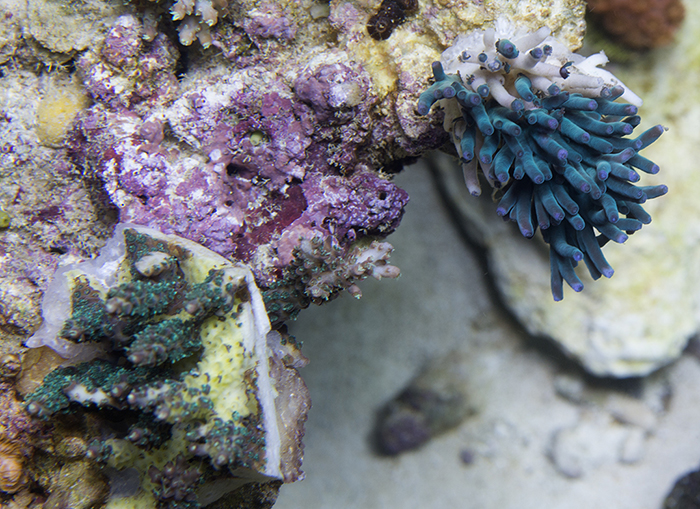 At this point I had seen no impact of any of the actions that I had taken, and was not encouraged to even try the more obscure ones that were suggested. I was starting to second guess all my decisions. Maybe I should have done a 100% water change, may be I should have lowered the temperature to 74F, maybe I should have taken the dead corals out and thrown them away. Maybe I should not have fragged the tank so heavily.
At this point I had seen no impact of any of the actions that I had taken, and was not encouraged to even try the more obscure ones that were suggested. I was starting to second guess all my decisions. Maybe I should have done a 100% water change, may be I should have lowered the temperature to 74F, maybe I should have taken the dead corals out and thrown them away. Maybe I should not have fragged the tank so heavily.
One of the things that I realized was that everyone was proposing an action to fix the problem, but we really have no concrete evidence as to what the real cause of RTN is. There is wide spread speculation that it is bacterial, or even viral, or even a potential shut down reaction of the coral. No one seemed to have an answer to my question–What would happen if I did nothing? At this point I decided that if nothing else I could at least answer THIS question. In the worst case I would lose all myAcropora, but they were still dying and all I was doing was throwing money and effort at the tank with no result. So for the sake of expanding the knowledge base, my one single action was to “DO NOTHING” and let it run its course.
Over the next couple of months, I only saw a few more deaths and things started to stabilize to the point at which coral was starting to regrow on dead skeleton. It had run its course and left the system just as mysteriously as it appeared. I lost about half my Acropora, but in a 500G tank the remaining half was still a lot.
Going through this ordeal triggered my interest in combing through the scientific literature to see if there is any information about RTN and coral diseases. What I found is that there is not much on RTN, and information applicable to coral disease in aquariums is quite limited. Knowing where coral disease pathogens originate from and how they affect corals specifically are questions for which no unique and simple answer can be found. Luna et al (2009) hypothesize that the RTN in stony corals can be an infectious disease associated to the presence of Vibrio harveyi. Others have implicated other vibrio species such as Vibrio coralliilyticus (Ben-Haim et al., 2003; Sussman et al., 2008), V. shiloi (Kushmaro et al., 2001) and V. harveyi (Luna et al., 2010).
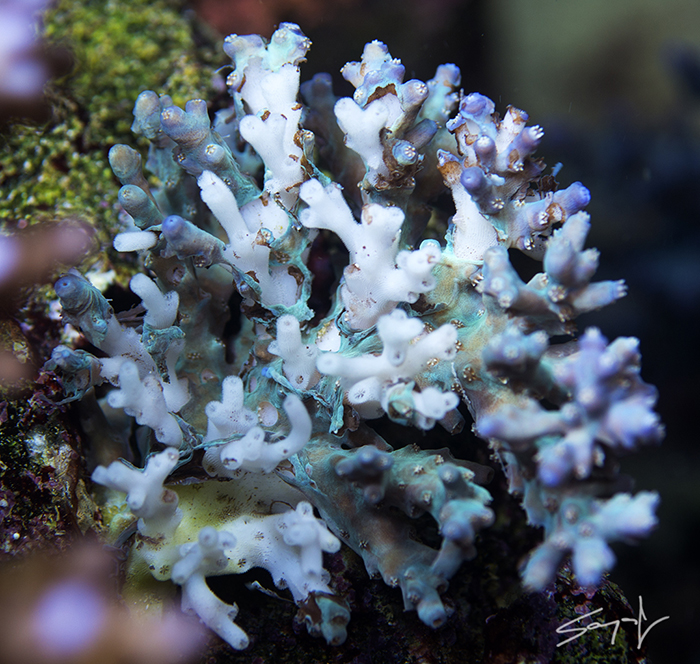 Coral pathogens are often known to be found in healthy tissue and only become pathogenic when environmental conditions and host pathology changes. Stressors such as increased temperature either modify the structure of the coral microbial symbiotic community or trigger the production of virulence factors. Temperature stress can increase chances of coral disease development in several ways (Vega Thurber et al., 2009) – by creating stress in the coral holobiont and decreasing its resistance to infection, increasing growth and virulence of opportunistic coral pathogens, and decreasing the production of antimicrobials by symbiotic bacteria in the coral mucus, thereby facilitating the growth of opportunistic and potentially pathogenic bacteria (Ritchie, 2006). Ritchie (2006) could not resolve whether a temperature-dependent growth of the population of opportunistic bacteria reduced the population of symbiotic bacteria and consequently the production of antimicrobials, or a temperature-dependent shutdown of antimicrobial production by symbiotic bacteria allowed the development of opportunists.
Coral pathogens are often known to be found in healthy tissue and only become pathogenic when environmental conditions and host pathology changes. Stressors such as increased temperature either modify the structure of the coral microbial symbiotic community or trigger the production of virulence factors. Temperature stress can increase chances of coral disease development in several ways (Vega Thurber et al., 2009) – by creating stress in the coral holobiont and decreasing its resistance to infection, increasing growth and virulence of opportunistic coral pathogens, and decreasing the production of antimicrobials by symbiotic bacteria in the coral mucus, thereby facilitating the growth of opportunistic and potentially pathogenic bacteria (Ritchie, 2006). Ritchie (2006) could not resolve whether a temperature-dependent growth of the population of opportunistic bacteria reduced the population of symbiotic bacteria and consequently the production of antimicrobials, or a temperature-dependent shutdown of antimicrobial production by symbiotic bacteria allowed the development of opportunists.
It has been shown that corals harbor species-specific bacterial communities, and the composition of the microbial communities might also play a role in susceptibility to disease. Coral microbial populations have also been suggested to evolve according to several stressors (Vega Thurber et al., 2009), and such modifications have been suggested to play a role in the resistance of corals against infections (Reshef et al., 2006; Rosenberg et al., 2007). Finally, as suggested in Mydlarz et al. (2010), different coral species likely manage their energy budgets in a different manner, with fast-growing species (e.g. Acropora spp.) dedicating more of their energy to growth and less to immunity (Palmer et al., 2008).
Clearly, it seems there is a lot to learn about RTN and there are a lot of unknowns. However when faced with the problem, we aquarists have to act within the constraints of limited knowledge and anecdotal advice often lacking a rational explanation. What I have tried to present in this article is a reasoned way to approach the problem through systematic evaluation of potential causes and rational analysis of actions with the ultimate objective of adding to our knowledge base. What I can present is small evidence that maybe “Do Nothing” is also a reasonable course of action.
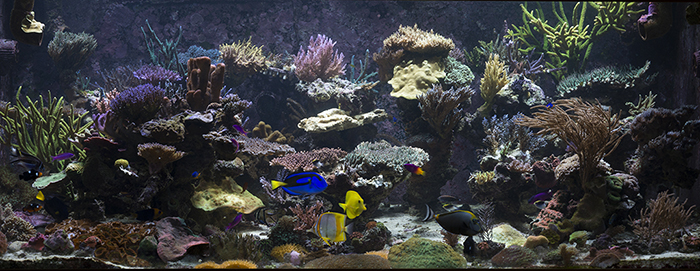 In retrospect, what would I do if I am faced with this problem again? Here is a short list of actions I would take and my rationale for doing so:
In retrospect, what would I do if I am faced with this problem again? Here is a short list of actions I would take and my rationale for doing so:
– Increase the frequency of water changes. There may be some merit to “the solution to the problem is dilution”
– Drop the temperature to about 72F. Cooler temperatures tend to slow down the activity and it may just give the coral holobiont a better chance to combat the bacterial imbalance
– Do not frag and try to save the coral frags in the same system. Create a separate system for them. If in fact it is a bacterial/viral infection then reintroducing a freshly fragged and stressed coral back into the same environment may make it more susceptible to disease. I was not very successful doing this.
– Let the heavily fragged corals heal before adding new colonies or frags. Introduction of new corals from the wild or different systems has the potential to bring in new bacteria that may be fine on the existing coral ,but may not play nice with the stressed corals.
– Do nothing else and let it run its course. This may be the least stressful on the tank and the owner. Random haphazard actions may be more detrimental.
The RTN saga detailed above took its toll, but unfortunately, it was not the only problem to rear its head in 2013. I’ll address these in the next installment in this series.
References
Ben-Haim Y, Zicherman-Keren M, Rosenberg E. (2003). “Temperature-regulated bleaching and lysis of the coral Pocillopora damicornis by the novel pathogen Vibrio coralliilyticus”, Appl Envir Microbiol 69 : 4236–4242.
Kushmaro A, Rosenberg E, Fine M, Ben-Haim Y, Loya Y.(1998). “Effect of temperature on bleaching of the coral Oculina patagonica by Vibrio shiloi AK-1 “, Mar Ecol Prog Ser 171: 131–137.
Luna G.M.,Biavasco F. and Danovaro R. (2007) “Bacteria associated with the rapid tissue necrosis of stony corals.”, Environmental Microbiology 9,1851–1857.
Rosenburg et al, 2008, “The role of microorganisms in coral bleaching”, Journal of International Society of Microbial Ecology, 1-8.
Rosenberg E, Koren O, Reshef L, Efrony R, Zilber, Rosenberg I. (2007). “The role of microorganisms in coral health, disease and evolution”, Nat Rev Microbiol 5: 355–362.
Reshef L, Koren O, Loya Y, Zilber-Rosenberg I, Rosenberg E. (2006). “The coral probiotic hypothesis”, Environ Microbiol 8: 2068–2073.
Ritchie KB. (2006). “Regulation of microbial populations by coral surface mucus and mucus-associated bacteria,” Mar Ecol Prog Ser 322: 1–14.
SussmanM.,Willis B.L.,Victor S.and BourneD.G. (2008) “Coral pathogens identified for white syndrome (WS) epizootics in the Indo-Pacific”, PLoS ONE 3.
Sweet M, Jones, R and Bythell, J., 2011, “Coral diseases in aquaria and in nature”, Journal of the Marine Biological Association of the United Kingdom, page 1 of 11.
Vega Thurber RL, Correa AMS. (2011). “Viruses of reef-building scleractinian corals”, JEMBE 408:102–113.
Vega Thurber RL, Willner-hall D, Rodriguez-mueller B,Desnues C, Edwards RA, Angly F et al. (2009). “Metagenomic analysis of stressed coral holobionts”, Environ Microbiol 11: 2148–2163.
Laura D. Mydlarz’ , Elizabeth S. McGinty, and C. Drew Harvell (2010),” What are the physiological and immunological responses of coral to climate warming and disease?”, The Journal of Experimental Biology 213, 934-945.


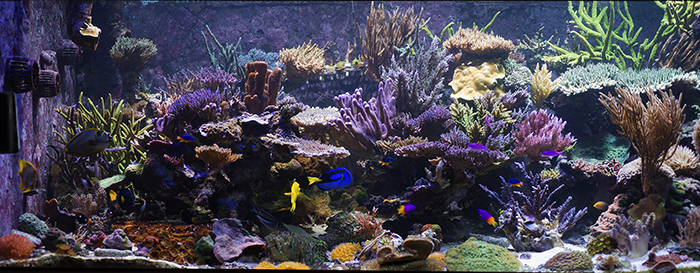
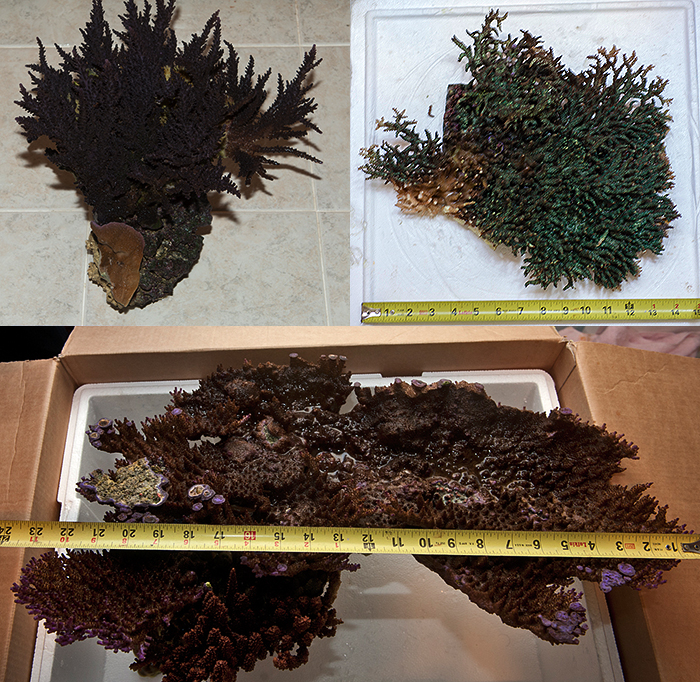

0 Comments